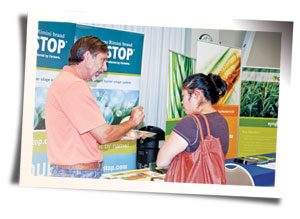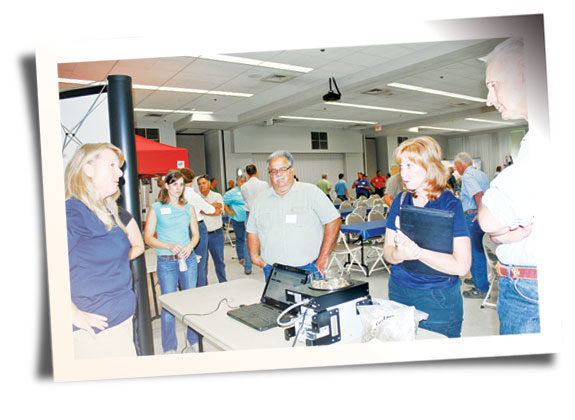A significant part of most dairies’ total mixed ration, corn silage is a crop that can lose its nutritional potential if not harvested and stored carefully. University of California dairy advisers and specialists, along with veterinarians and nutritionists, presented dairy producers and managers with tools to improve their silage handling at Silage Day in Modesto.
Highlights included:
• A survey of San Joaquin Valley dairies showed that over half the dairies responding indicated they discard three to six inches of spoiled silage from piles. UC Cooperative Extension adviser Jennifer Heguy said reducing surface spoilage of silage piles should be a priority for dairy producers. Adequate packing, prompt covering and sealing of piles is a good place to start.
 • Silage quality from a nutritionist’s point of view: Dr. Heidi Rossow, UC veterinarian and dairy production medicine specialist, said quality comes down to moisture content.
• Silage quality from a nutritionist’s point of view: Dr. Heidi Rossow, UC veterinarian and dairy production medicine specialist, said quality comes down to moisture content.
In determining when to harvest, sampling dry matter is the most reliable method. Squeezing is not reliable – milk line measurements have changed with new hybrid varieties and degree-days will get you close but not exactly when to harvest.
With more intense sampling, underestimations and overestimations were reduced and interval samples across all dairies were within 3 percent of actual dry matter harvested.
• The value of high-quality corn silage: Not all corn silage has the same feed value, reports Dr. Noelia Silva-Del Rio, UC dairy production medicine specialist. Variety, production, harvesting/storage and feedout all affect quality. To maximize starch availability, harvest at correct dry matter percent and store three months. NDF digestibility also increases over time.
• Feeding silage for production and health: Dr. Peter Robinson, UC dairy nutrition specialist, gave three principles of good silage piles: remove air to stop yeast and mold growth, keep air and water out and get pH down to 4 quick. The goal is to minimize nutrient loss.
In California, the next silage challenge will be VOC regulations. To read more about this topic click here . PD
Photos by Cecilia Parsons.




